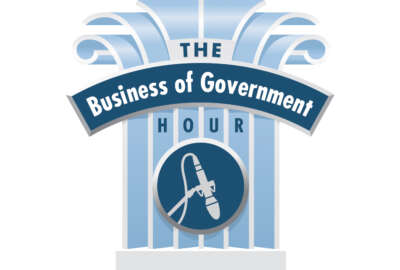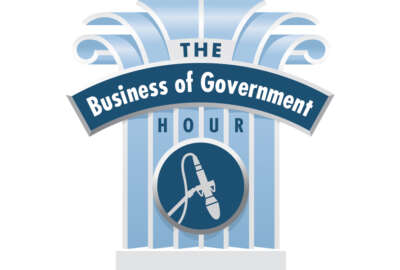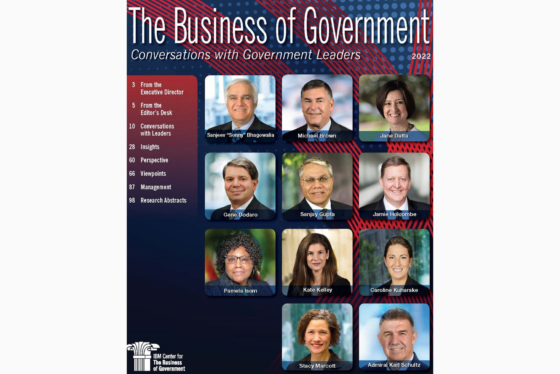Insight By Business Of Government Hour
How the National Weather Service keeps Americans safe: a conversation with Dr. Louis Uccellini
How does the National Weather Service keep Americans safe by predicting extreme weather events earlier and with more accuracy? What are its strategic priorities?
This content is provided by the IBM Center for the Business of Government.
Mondays at 11:00 a.m. & Fridays at 1:00 p.m.
The Business of Government Radio Hour, hosted by Michael J. Keegan, features a conversation with a federal executive who is changing the way government does business. The executives discuss their careers and the management challenges facing their organizations. Guests include administrators, chief financial officers, chief information officers, chief operating officers, commissioners, controllers, directors, and undersecretaries.
ON THIS WEEK’S SHOW:
How does the National Weather Service keep Americans safe by predicting extreme weather events earlier and with more accuracy? What are its strategic priorities? How is the National Weather Service using technology and innovation to meet its mission? Join host Michael Keegan as he explores these questions and more with Dr. Louis Uccellini, Assistant Administrator for Weather Services at the National Oceanic and Atmospheric Administration and Director of the National Weather Service.
LISTEN TO THE FULL SHOW:
GUEST BIOGRAPHY:
 Dr. Louis W. Uccellini is the National Oceanic and Atmospheric Administration’s Assistant Administrator for Weather Services, and Director of the National Weather Service. In this role, he is responsible for the day-to-day civilian weather operations for the United States, its territories, adjacent waters, and ocean areas.
Dr. Louis W. Uccellini is the National Oceanic and Atmospheric Administration’s Assistant Administrator for Weather Services, and Director of the National Weather Service. In this role, he is responsible for the day-to-day civilian weather operations for the United States, its territories, adjacent waters, and ocean areas.
Prior to this position, he served as the Director of the National Centers for Environmental Prediction (NCEP) for 14 years. He was responsible for directing and planning the science, technology, and operations related to NCEP’s nine centers: Central Operations, Environmental Modeling Center, Ocean Prediction Center, Hydrometeorological Prediction Center, Climate Prediction Center, all in Camp Springs, MD; the National Hurricane Center in Miami, FL; Storm Prediction Center in Norman, OK; Space Weather Prediction Center in Boulder, CO; and the Aviation Weather Center in Kansas City, MO. With his leadership, the 13 year effort to plan, develop and build the new NOAA Center for Weather and Climate Prediction (the NCWCP Building) at the University of Maryland M Squared Research Center was completed; as was the implementation of a Seamless Suite of Models from the S2S to Mesoscale modeling systems based on the principle of multi model ensembles.
Dr. Uccellini was the Director of the National Weather Service’s Office of Meteorology from 1994 to 1999, Chief of the National Weather Service’s Meteorological Operations Division from 1989 to 1994, and section head for the Mesoscale Analysis and Modeling Section at the Goddard Space Flight Center’s Laboratory for Atmospheres from 1978 to 1989.
Dr. Uccellini received his Ph.D. (1977), Master (1972) and Bachelor of Science (1971) degrees in meteorology from the University of Wisconsin-Madison. He has published more than 70+ peer-reviewed articles and chapters in books on subjects including analysis of severe weather outbreaks, snowstorms, gravity waves, jet streaks, cyclones, and the use of satellite data in analysis and modeling applications and more recently the basis for the Joint Center for Satellite Data Assimilation, the WMO based Grand Challenge for Seamless Prediction and the Restructuring of the NWS to Build a Weather Ready Nation. He is the co-author of a widely acclaimed two-volume American Meteorological Society (AMS) monograph Northeast Snowstorms, published in 2004, and authored chapters in the 1990 AMS publication Extratropical Cyclones, the 1999 AMS publication The Life Cycles of Extratropical Cyclones, and the 2008 AMS publication Synoptic Dynamic Meteorology and Weather Analysis and Forecasting.
Dr. Uccellini is the Permanent US Representative at the World Meteorological Organization, and has served on many national and international research and field experiment programs. He has received many awards in recognition of his research and operational achievements including the Maryland Academy of Sciences Distinguished Young Scientist Award (1981), the NASA Medal for Exceptional Scientific Achievement (1985), the AMS’s prestigious Clarence Leroy Meisinger Award (1985), the Cleveland Abbe Award (2016), and the National Weather Association’s Research Achievement Awards for Significant Contributions to Operational Meteorology (1996). He was elected as President of the AMS in 2012- 2013 and served as Co-Chief Editor of Weather and Forecasting from 1988-1992. In 2001 he received the U.S. Presidential Meritorious Executive Rank Award and in 2006 he received the U.S. Presidential Distinguished Rank Award.
Copyright © 2025 Federal News Network. All rights reserved. This website is not intended for users located within the European Economic Area.





